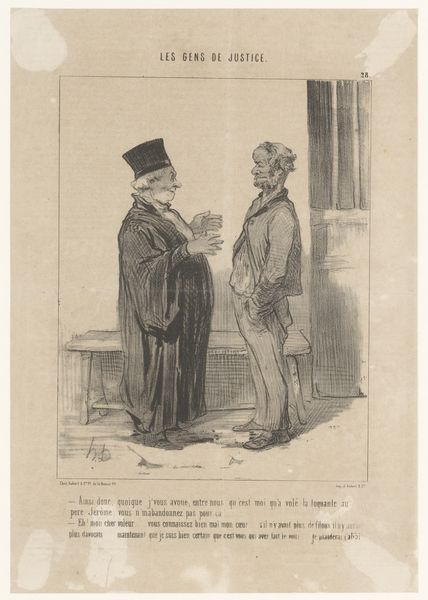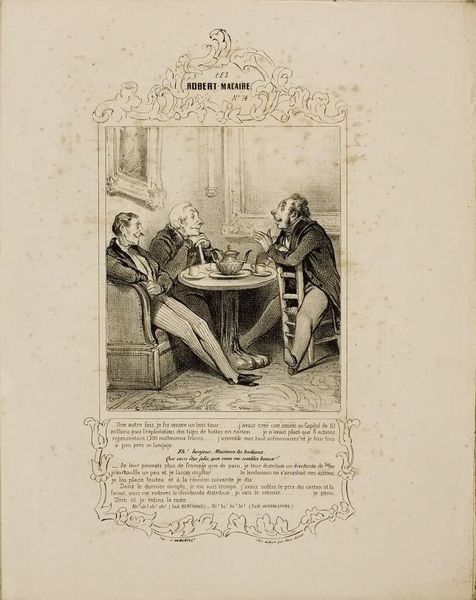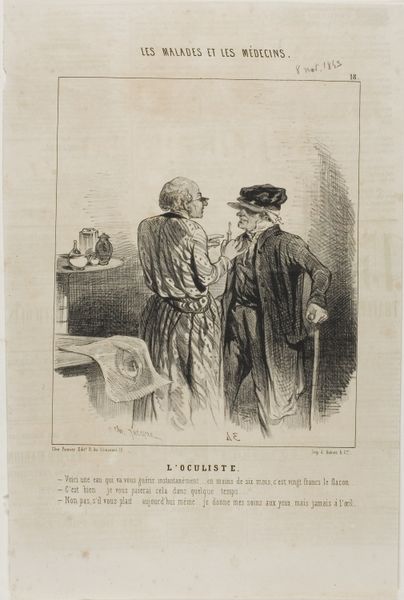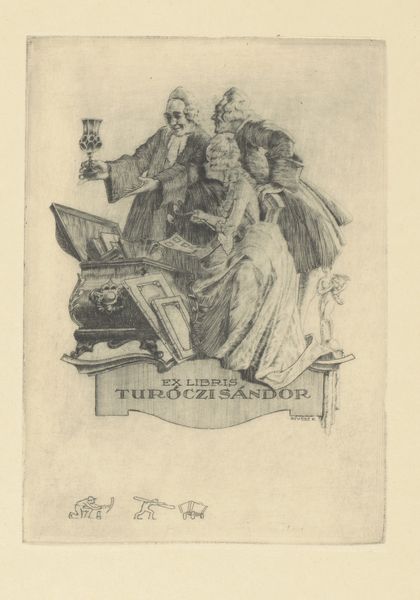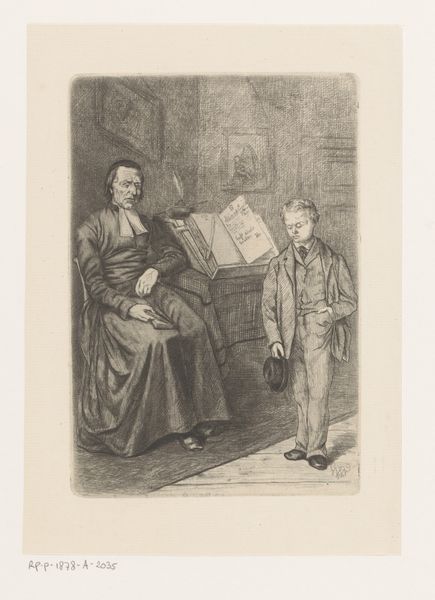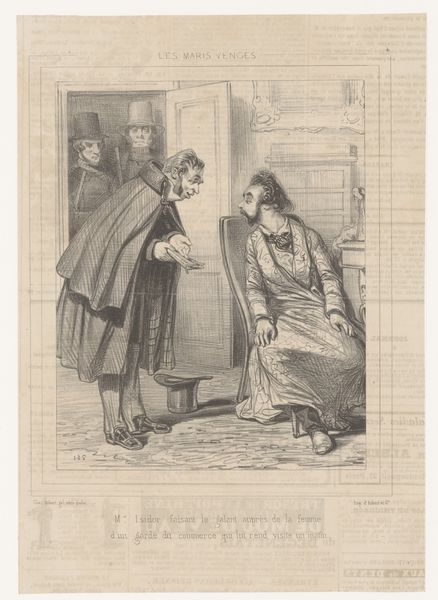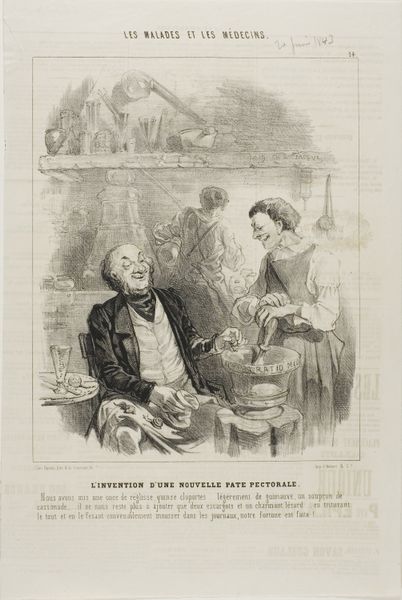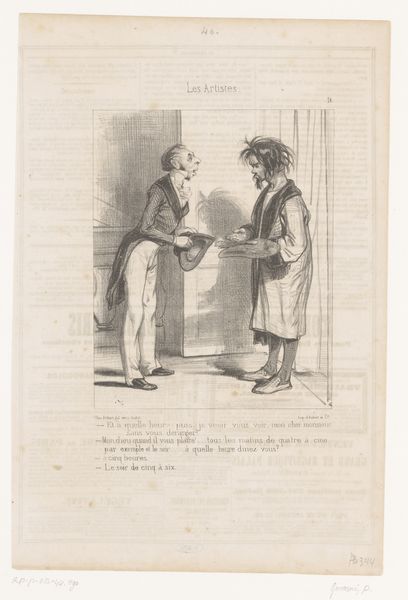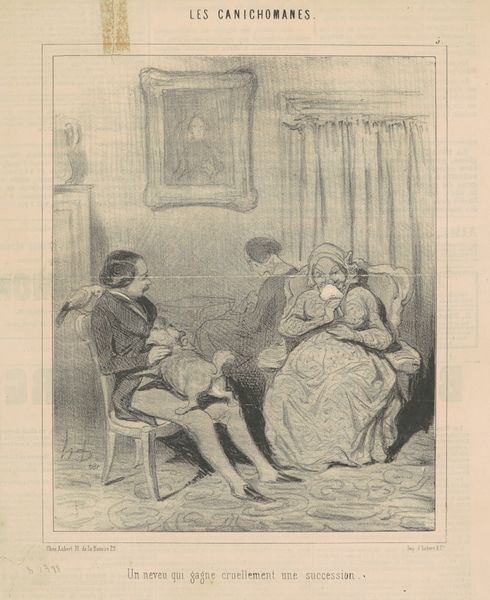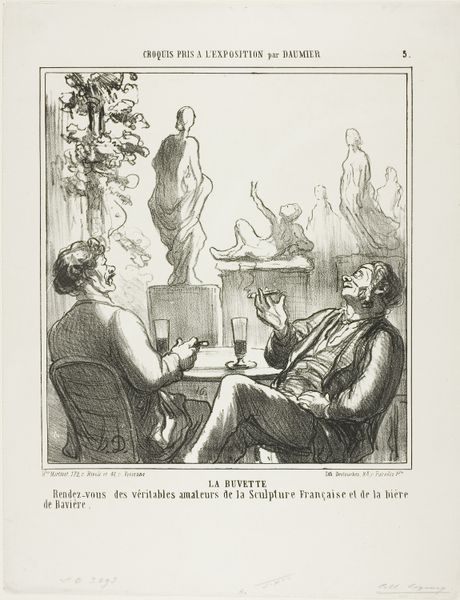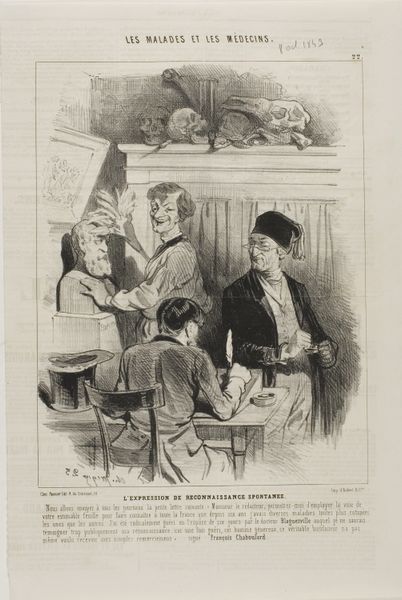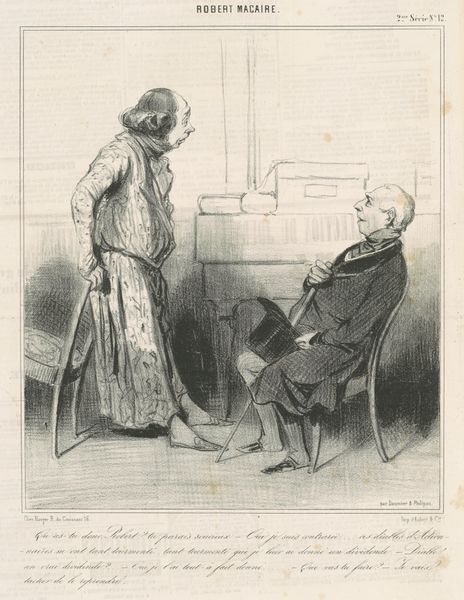
print, etching
#
portrait
# print
#
etching
#
old engraving style
#
genre-painting
Dimensions: height 196 mm, width 127 mm
Copyright: Rijks Museum: Open Domain
Editor: So, this is "Pijprokende man en theedrinkende vrouw zitten aan tafel" - "Man Smoking Pipe and Woman Drinking Tea Sitting at a Table" – an etching by Willem Geets, made in 1874. It looks pretty domestic, but there’s this weird almost celebratory scene above the couple… What am I supposed to make of all that? What do you see in this piece? Curator: This etching offers a glimpse into the burgeoning middle class of the late 19th century. Genre scenes like this were quite popular, showing idealized versions of everyday life. The “celebratory scene,” as you call it, likely represents the values or aspirations associated with this lifestyle. Notice the inclusion of names and dates within the ornamental cartouche – it may commemorate an important social occasion. Editor: Ah, I hadn’t thought about the celebration possibly relating to a specific family. But the etching itself, the very act of producing and displaying such a piece... isn’t that part of defining middle-class culture too? Showing you’ve "made it," in a way? Curator: Precisely! Etchings like these became increasingly accessible to the middle class. Collecting and displaying such genre scenes served to reinforce their identity and social standing. Consider where such prints would have been hung – in the parlor, for guests to admire? The politics of imagery are definitely at play here. It’s about curating an image of success and domestic harmony. Does the woman appear confined to the domestic sphere, while the man seems active, at leisure, with his pipe? Editor: Yes, it seems like a power dynamic for sure. He is facing us, almost confidently. She is in profile, meekly attending with the tea. I see the scene’s function now as a cultural tool rather than merely a familial scene. Thanks. Curator: And thank you for noticing those power dynamics and how this domestic imagery can function on a societal level.
Comments
No comments
Be the first to comment and join the conversation on the ultimate creative platform.
